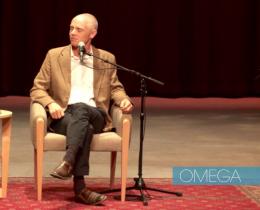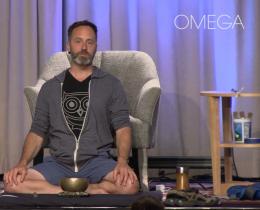One of the claims of higher education, and particularly of liberal arts colleges, is that we teach students how to think. What does this actually mean? Surely our students can think, so in what sense do they need to be taught to think? Maybe it means that we aid them in developing their analytical problem-solving skills and their ability to integrate different aspects of situations creatively. Certainly one of the goals of contemplative exercises is to develop these skills.
Controlling Attention
A key element in solving any problem is attention. Anyone who has attempted to solve complex problems knows the intense concentration and attention required. Contemplative exercises hone this skill. Many of them are directly aimed at cultivating concentrated attention. Of course, concentration develops by concerted effort. Musicians, dancers, and athletes, for example, all acquire high levels of concentration.
However, problem solving also requires thinking about a problem from various angles, so while attention is important, so is the ability to let go of what is not working while focusing on (but not clinging to) another. Thus, clear and flexible attention is required to solve more open-ended insight problems—those that require an “aha” moment. These problems require thinking in different ways.
For example, suppose you were asked to describe how to throw a ball so that it would travel a short distance, come to a complete stop, and then reverse itself. You are not allowed to bounce it off any surface or tie anything to it. As long as you think of the ball moving horizontally, you will not be able to describe the motion. Being keenly aware of the directions, however, you note that nothing in the problem states in which direction the ball should go.
Once you realize this, you can think outside the constraint of throwing a ball as you normally do. If you think about how objects suspend for a moment when thrown up, you realize that throwing the ball up in the air would cause it to rise, stop, and then reverse. Psychologists M. Aisling Murray and Ruth Byrne argue that in order to solve these sorts of problems, people must have the capacity to hold alternative possibilities along with the ability to switch their attention between them. These abilities are especially refined and honed by contemplative practices.
Cultivating Multiple Intelligences
Logical analytical modes of thinking are just one aspect of our broad abilities, however. For many years, it was taken for granted that each person had a given level of intelligence that determined cognitive ability, often referred to as the index “g.” Teachers could support students in living up to the potential of their given level of intelligence, but essentially it was immutable. This view has come under serious criticism for a variety of reasons. First, the notion that a single metric could capture a meaningful notion of intelligence does not seem possible. As Howard Gardner, Robert Sternberg, David Perkins, and others have argued, humans have different kinds of intelligence, most prominently captured by Gardner’s idea of multiple intelligences.. Second, whatever the intelligence might be, the notion that it is fixed within very tight bounds for all time has also shown to be incorrect.
Stephen Jay Gould argues convincingly in The Mismeasure of Man that such a static metric does not capture how our abilities change over time. Indeed, in their rather conservative review of this issue, even the task force designated by the American Psychological Association concluded that “a given person’s intellectual performance will vary on different occasions, in different domains.”
Robert Sternberg’s Beyond IQ: A Triarchic Theory of Human Intelligence divides intelligence into three areas: analytical, creative, and practical. Contemplative exercises support analytical intelligence through stabilization of the mind and increased ability to focus. Logical problem solving involves clear, focused linear thinking, requiring the ability to concentrate and not be distracted. Yet it also requires being open to inspiration and intuition. Creative aspects of problem solving are more synthetic, requiring an awareness of many possible solutions. Complex problems demand being able to see outside the constraints of strong initial attempts or useful heuristics that do not solve the current problem.
Founder of analytical philosophy Alfred North Whitehead famously pronounced, “Fools act on imagination without knowledge; pedants act on knowledge without imagination. The task of a university is to weld together imagination and experience.” Being aware of when to use a quick rule and when not to use such a rule is the first step in solving complex problems. Beyond that, learning not only how to focus but on what to focus is the essence of effective problem solving.



